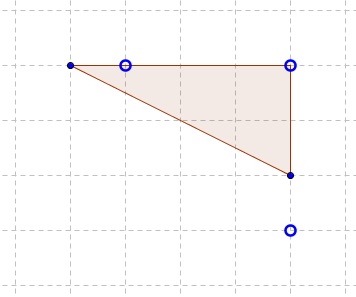A Three Pegs Question
Three pegs on a plane form an isosceles right triangle with a leg of length 3. The pegs may move to an arbitrary distance but on a line parallel to the line formed by the other two. Is it possible to eventually get the three pegs at the vertices of a right triangle with legs 2 and 4?
| What if applet does not run? |
|Activities| |Contact| |Front page| |Contents| |Geometry|
Copyright © 1996-2018 Alexander Bogomolny
Three pegs on a plane form an isosceles right triangle with a leg of length 3. The pegs may move to an arbitrary distance but on a line parallel to the line formed by the other two. Is it possible to eventually get the three pegs at the vertices of a right triangle with legs 2 and 4?

| What if applet does not run? |
Solution
No, this is not possible.
To see why, consider the triangle formed by the three pegs. The displacement of a vertex along the line parallel to the opposite side does not change the area of the triangle. In other words, the area of the triangle formed by the three pegs is invariant under any possible puzzle move. Initially, the area was
References
- A Decade of the Berkeley Mathematical Circle, The American Experience, Volume I, Z. Stankova, Tom Rike (eds), AMS/MSRI, 2008, p. 96
|Activities| |Contact| |Front page| |Contents| |Geometry|
Copyright © 1996-2018 Alexander Bogomolny
73574970
